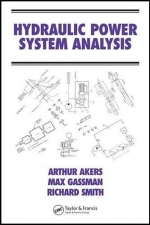Tab Article
Treats fluid power system modeling at a level ideally suited to design engineers with limited knowledge of fluid power
Emphasizes a clear division between steady state and dynamic modeling
Reviews the basic features of automatic control theory and introduces noise reduction for fluid power systems
Discusses bulk modulus related to entrained air and flexible hoses, explaining adverse dynamic effects
Combines dynamic analysis of flow allocation and explores the dynamics involved in flow division in the circuit
The excitement and the glitz of mechatronics has shifted the engineering community's attention away from fluid power systems in recent years. However, fluid power still remains advantageous in many applications compared to electrical or mechanical power transmission methods. Designers are left with few practical resources to help in the design and analysis of fluid power systems, especially when approaching fluid power for the first time.
Helping you overcome these hurdles, Hydraulic Power System Analysis demonstrates modern computer-aided analytical techniques used to model nonlinear, dynamic fluid power systems. Following an overview of fluid power, the authors examine various relevant fluid properties, energy calculations, and steady state and dynamic analysis along with a review of automatic control theory. Turning to modeling, the next few chapters address valves and motors and then apply dynamic modeling to examples relating to pumps, hydrostatic transmissions, and valves. The book includes a unique chapter showing how to combine flow resistance equations with the differential equations governing dynamic system performance. The final chapter translates electrical circuit theory concepts to noise attenuation in fluid power systems.
Illustrated with many equations, practical computer modeling examples, and exercises, Hydraulic Power System Analysis provides a much-needed modernization of dynamic modeling for fluid power systems using powerful computational tools.


